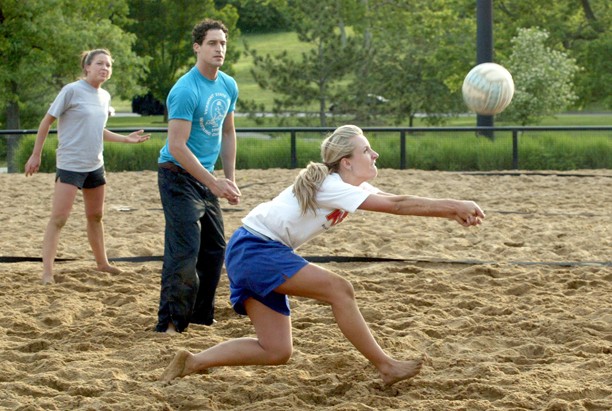On Tuesday, athletic director Greg Byrne announced the addition of a Division I sand volleyball program to the UA, with the team making its debut in the spring of 2014.
Indoor volleyball coach Dave Rubio called the addition of the program a “winning situation” for Arizona.
Here’s a rundown of what is in store for Arizona’s 20th Division I sports program.
*Note: all rules and specifications about the game itself are according to active.com
A familiar face at the helm
Led by Rubio, the search for a head coach “took a while.”
“When I went through the process, interviewing and talking to a lot of people interested in sand,” said Rubio, who just finished his 21st year as Arizona’s head coach. “The biggest obstacle for me was that there’s not a strong pool of talent to draw from because there’s not sand volleyball currently being fielded.”
He settled on Steve Walker, the associate head coach of the Wildcats’ indoor volleyball team.
Rubio was initially looking for candidates who had played and/or coached sand volleyball in their careers, but eventually decided he wanted a coach that had experience in recruiting and running a program.
As a longtime Arizona assistant and former UC Davis head coach, Walker met those standards.
“Steve was, I thought, the best candidate,” Rubio said.
Crossing over
Although Walker will no longer be a part of the indoor coaching staff, Rubio expects that six to eight players from the indoor roster will participate in sand volleyball.
“We’ll [Rubio and Walker] need to communicate on a regular basis and make sure both teams’ needs are being met,” Rubio said.
Rubio considers the addition of the sand volleyball team beneficial to his squad in terms of the added training it will provide to the athletes who cross over, and he said feels the program will make the UA more attractive to recruits.
Sand volleyball rosters typically consist of 15 women, and Arizona will be able to offer up to six scholarships.
It is NOT called ‘beach volleyball’
Simply put, not all participating universities have beaches in their states.
The location
As of now, the search is still on for UA sand volleyball’s home court.
“We’re looking at a couple different venues,” Rubio said. “As of right now, nothing is set in stone.” Fun fact: Arizona will have to truck in special sand from California to play on.
NCAA rules
In order to be considered a Pac-12 sport, there need to be at least six participating teams. Arizona intends to join the Pac-12, according to Rubio, which already includes UCLA, USC, Cal and Stanford. He expects at least one other team to join as well.
In order to be an officially sponsored NCAA championship sport, 40 competing schools need to participate in two consecutive seasons.
In 2011, Pepperdine defeated Long Beach State in the inaugural American Volleyball Coaches Association sand volleyball national championship.
Sand volleyball ≠ indoor volleyball
Besides the obvious — you know, like that brownish debris on the ground and the presence of that big, shining yellow circle in the sky — the indoor and outdoor versions of the sport are quite different.
“The best analogy I could make would be swimming versus water polo,” Rubio said. “You’re basically doing the same strokes, you’re in the pool and you’re wet. But they’re completely different games.”
– Court size: indoor courts are 18 m x 9 m with an attack line 3 m from the center line, while sand courts are 16 m x 8 m with no attack line.
– Balls: indoor’s are heavier and made of leather, helping the balls to move quicker and be hit harder. Sand’s are softer, lighter and a bit bigger, allowing them to float more in the air and making the weather a factor.
– Lineups: Indoor is played with six players per side, each assigned to a position. Sand is with two players per side, without any specialized positions.
– Scoring: Indoor consists of five sets, the first to 25 points wins the set, three sets win a match and teams switch sides after every game. In sand, a match is a series of best-of-three games, each played to 21 points, and two sets wins the match. In both indoor and sand, the team must win by two points.









